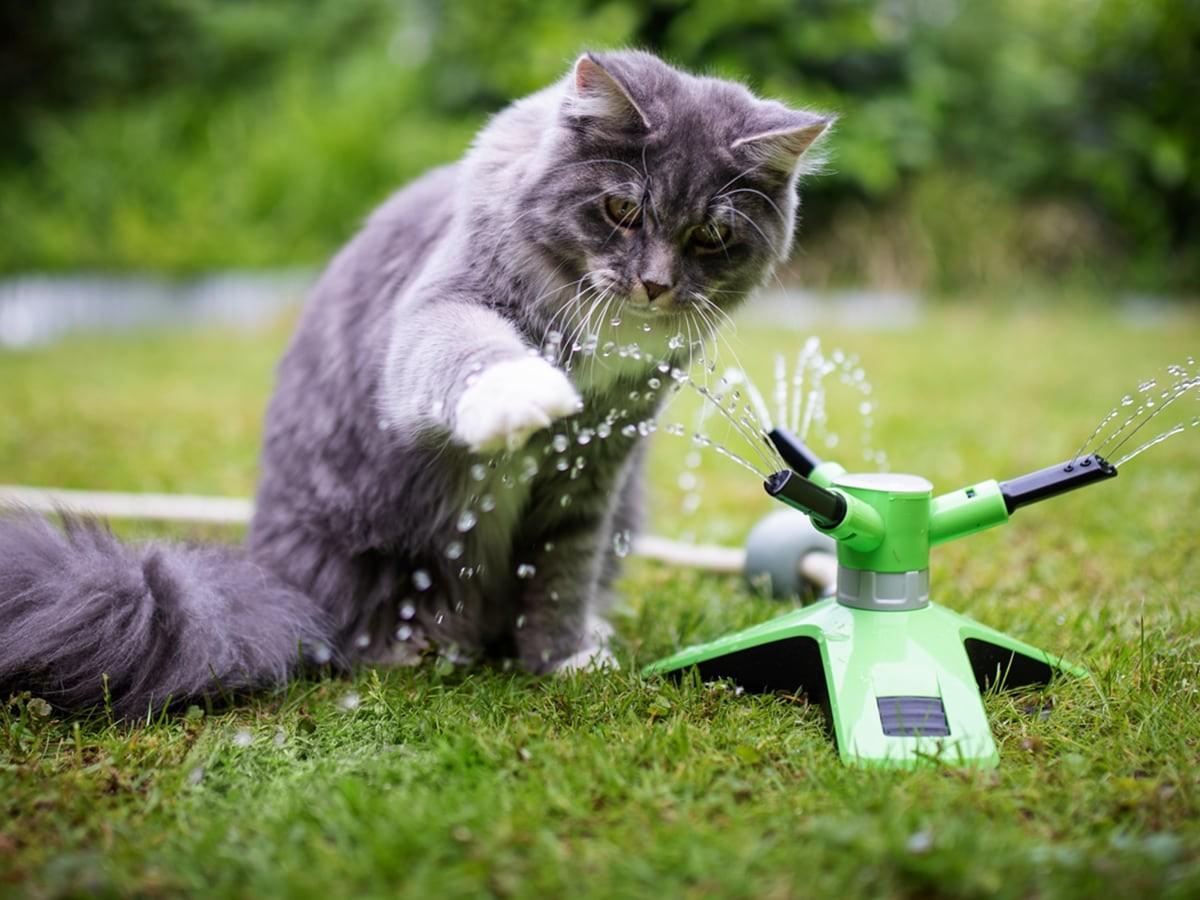When temperatures soar in the summer, you may notice your cat acting differently. Whether they are an indoor, outdoor, or anywhere kind of cat, they will find ways to stay cool just like we do. But what exactly do cats do to cool themselves?
While we sweat and dogs pant, many people aren’t sure how cats deal with heat. It’s a common misconception that they, like dogs, are able to sweat through their paws to keep themselves cool. Maybe you’ve noticed their nose is wet or seen moist paw-prints on your floor, but any secretions from these areas are for moisture and are not sweat. This moisture is insufficient for cats, who must maintain a 101–102-degree body temperature, to cool their blood.
How cats keep cool
Cats are incredibly smart and strategic when it comes to handling high temperatures. You should keep an eye on them when it’s hot out because they can suffer from overheating and heat stroke, but generally they do a good job handling it on their own.
One thing cats do to battle the heat is to conserve their energy. Their activity levels will drop during the warmer parts of the day and tend to pick up again once it is cooler. They won’t move around as much and may take naps more frequently as well. This is because they don’t want to overexert themselves in the hot weather. Conservation of energy keeps their internal temperature down so that they don’t overheat.
Cats will also hydrate themselves by drinking more water. When a cat is hot, they get thirsty. Just like us, they will want a nice cool drink to enjoy whenever they are feeling too warm. This will help them cool down as well as stay hydrated.
You may notice that when it’s hot out your cat likes to lounge on your cement floors or your ceramic tiles. This is because cats look for cooler surfaces and rooms to prevent themselves from getting too hot. They understand that these areas cool their bodies down so they will actively seek them out when they are feeling too hot. Make sure your outdoor cat has access to shady areas and your indoor cat has access to cooler rooms whenever it is hot outside.
Since cats don’t naturally sweat – they recreate the process themselves through grooming. The saliva from their tongue acts like sweat to cool down their body. In extreme temperatures, your cat may also pant. Panting is a sign that your cat is overheating, so you’ll want to get them out of the heat right away if you notice this.
Lastly, if you’re tempted to shave your cat’s fur to help him combat a hot summer, don’t! Their furry coat, believe it or not, actually helps them stay cool! This is because their coat has insulating properties that help regulate body temperature. Their fur slows the process of heat absorption, allowing them to maintain their internal temperature more easily. Something you can do to help your cat is to brush them frequently to help remove excess fur on their coat.
Signs of overheating in cats
Cats don’t always make it obvious when they are struggling with the temperature. When the temperatures rise, watch to make sure they aren’t exhibiting any signs of overheating. Some common signs to look out for include lethargy, agitation, loss of appetite, panting, drooling, or vomiting. In most cases, lethargy is a normal sign that your cat is conserving energy to maintain their body temperature. However, if it is extreme or combined with any of the other symptoms it should be taken seriously.
If you’re in the middle of a heatwave, your cat may show mild signs of overheating. If their symptoms are prolonged or get worse, your cat could be at risk of a heatstroke or other serious heat-related complications.
What can you do to help them stay cool?
In general, you will want to do a few things to make sure your cat is staying cool. If you have air conditioning, turn it on at least for a little bit to ensure your indoor areas are at a comfortable temperature for you and your cat. You can also close blinds and curtains during the day to limit sunlight entering the room. Always give your cats access to shade and cooler areas of the house that have cool surfaces or don’t get much sunlight. You should also always make sure your cat has access to cool drinking water and is staying hydrated. If you notice that your cat doesn’t seem to be drinking enough, try getting them to drink from your faucet (if it’s safe to drink from) or buying a cat fountain. This is because cats often prefer to drink moving water! On extra hot days, keep your cats inside or limit their sun exposure. You can also buy cooling gear such as cooling mats or vests for them to use. If you don’t want to buy something, you can also keep your cat cool by using a damp cloth on their fur. If your cat is a fan of water, you can even take them for a swim!
If you’re taking the necessary precautions to keep your cat safe, it’s likely that they will be just fine even if it’s hot out! However, always remember to look for signs of overheating. If you’re ever worried about your cat’s health or temperature, speak with your veterinarian. Your vet will be able to help you determine if your cat is suffering from any health issues and can also give you advice for how to protect your cat from the heat.

I've had the privilege of immersing myself in the realm of pet safety. As the owner of an energetic mini golden doodle, I know just how stressful being a pet owner can be. I am dedicated to ensuring our beloved pets enjoy a life brimming with good health.












